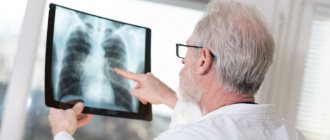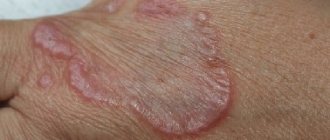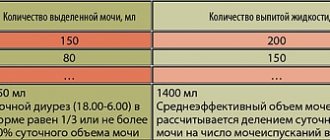Shortness of breath is a symptom that accompanies a number of serious pathological conditions. Complaints of shortness of breath
can be heard from patients suffering from dysfunction of the cardiovascular system or respiratory system. At the same time, the presence of this symptom does not always arise due to serious pathologies.
Thus, it can occur due to a lack of oxygen in the blood during intense physical activity or while staying in high mountains with thin air. In such cases, the respiratory center of the brain receives a signal about hypoxia and seeks to compensate for the oxygen deficiency by frequent breathing, because it leads to an attack of shortness of breath.
Shortness of breath: classification
The medical term “dyspnea” is used to refer to shortness of breath, defining this symptom as a violation of the depth and frequency of breathing. Usually a person rarely pays attention to his breathing. During exercise, the frequency and depth of breaths, as a rule, increase, but there is no feeling of discomfort. This is physiological shortness of breath, which is characterized by rapid recovery to normal after cessation of exercise. However, it is difficult to call shortness of breath when walking or performing normal activities, and even at rest, the norm. This is a clinical manifestation of a certain pathology that needs treatment.
| View | Causes of shortness of breath | Peculiarities |
| Expiratory dyspnea | Reduction of the lumen of small bronchi, which occurs in pathological conditions such as emphysema and chronic obstructive pulmonary disease | Characterized by difficulty in breathing out |
| Inspiratory dyspnea | Reduction of the lumen of the bronchi and trachea due to asthma, injuries that lead to compression of the bronchi, inflammatory processes of the pleura | Characterized by difficulty breathing |
| Mixed dyspnea | Occurs as a result of advanced lung diseases and heart failure | Characterized by difficulty in inhaling and exhaling |
Depending on the frequency of breathing, the following types of shortness of breath are distinguished:
| View | Causes | Peculiarities |
| Tachypnea | Blood diseases, fever, anemia | Frequent shallow breathing of more than 20 respiratory movements per minute |
| Bradypnea | Brain damage, prolonged severe hypoxia in diabetic coma | Reduction of respiratory rate to 12 or less respiratory movements per minute |
Types and mechanisms of development of shortness of breath
According to the nature and form of external respiration disturbance, shortness of breath can be inspiratory, expiratory and mixed. In the presence of inspiratory dyspnea, the duration of the inhalation phase in relation to exhalation increases. Expiratory dyspnea is characterized by a predominance of exhalation over inhalation. With mixed shortness of breath against the background of an extended inhalation, the exhalation becomes even longer.
The development of inspiratory, expiratory and mixed dyspnea is ensured by the Hering-Breuer reflex. In its formation, an important role is played by highly sensitive, low-threshold mechanoreceptors of alveolar stretch. The impulses of these receptors are sent along the alpha fibers of the vagus nerve to the reticular formation of the brain stem and the respiratory center of the medulla oblongata, and then along the nerve pathways that go from the center to the respiratory muscles.
At the beginning of inspiration, when the alveoli are slightly filled with air and slightly stretched, low-frequency impulses are formed that are optimal for the inspiratory neurons of the respiratory center. Their activation leads to inhalation. As the degree of stretching of the alveoli increases, in cases where they are filled with air at the height of inspiration, a flow of impulses occurs from the mechanical alveolar stretch receptors and goes to the brain. They are not optimal for inspiratory neurons, which leads to interruption of the act of inhalation and the development of exhalation.
In cases of the development of limited disturbances in pulmonary ventilation due to pulmonary edema, pneumofibrosis, when the elasticity of the lung tissue decreases, the stretching of the alveoli under the influence of the physiological volume of inhaled air becomes significantly more difficult; from the mechanoreceptors of the stretching of the alveoli, low-frequency impulses enter the bulbar center for a long time. They stimulate inspiratory neurons for a long time, which leads to prolongation of the act of inspiration - the development of inspiratory dyspnea.
Degrees of dyspnea
The Medical Research Council has developed the MRC scale, according to which the degree of shortness of breath is determined:
- zero - appears only during intense physical activity, is physiological shortness of breath;
- first (mild) - violations appear when climbing up or walking quickly;
- second (medium) - problems arise when walking slowly and require stopping to restore breathing;
- third (severe) - the need to stop while walking every couple of minutes;
- fourth (very severe) - there are disturbances even at rest.
Shortness of breath: causes
It is customary to identify 4 main reasons leading to the development of dyspnea.
| Etiology | Features of manifestation | Diseases |
| Diseases of the cardiovascular system | Impaired blood circulation in the vessels of the lungs underlies the mechanism of dyspnea. Disorders intensify as the disease progresses and can occur even at rest. In addition, attacks can occur even during sleep. | Shortness of breath occurs with cardiac asthma, cardiopulmonary failure, which can be complicated by myocardial infarction, ischemia, and hypertension. |
| Respiratory diseases | They are often chronic and last for years (due to a decrease in the lumen of the respiratory tract and the accumulation of sputum in it). Shortness of breath is accompanied by a symptom such as coughing and requires the use of special medications. In infectious diseases, breathing problems depend on how severe the disease is, and, as a rule, go away within three to four days. Shortness of breath with severe pneumonia can occur due to heart failure. The most dangerous pathology with shortness of breath is pulmonary embolism, which causes chest pain and sometimes hemoptysis. |
|
| Metabolic disorders in the body | With anemia, shortness of breath is accompanied by dizziness, loss of appetite, and general weakness. Thyrotoxicosis is characterized by rapid metabolism and, as a result, a higher need for oxygen in the body, which leads to the development of hypoxia, due to which breathing becomes frequent and deep. |
|
| Nervous disorders | Patients of neurologists and psychiatrists are often bothered by a feeling of lack of air. A distinctive feature is the absence of other abnormalities other than neurasthenia or neurosis, and also that during an attack the patient breathes loudly and moans, trying in every possible way to attract attention to himself. | |
What is shortness of breath (lack of air)?
Shortness of breath is not an independent disease, but evidence of disturbances in the functioning of the heart, respiratory organs, endocrine and nervous systems, and the presence of anemia. Severe shortness of breath is not always a symptom of a serious illness - its degree does not depend on the stage or degree of development of the underlying pathology.
Shortness of breath, indicating illness, should be distinguished from the usual lack of air, which occurs in any person, for example, when walking at a fast pace or under stress. If the feeling of lack of air occurs in a calm state and for no apparent reason, this is a good reason to visit a doctor as soon as possible. Now you can undergo a consultation and a set of preparatory examinations when registering for a course of enhanced external counterpulsation or shock wave therapy of the heart absolutely free of charge!
Promotion
Just until the end of autumn, undergo a free consultation and a set of preparatory examinations* when registering for a course of enhanced external counterpulsation or shock wave therapy of the heart.**
Send a request
* Check the details of the Promotion by phone. **Has contraindications; consultation with a doctor is required.
Enhanced external counterpulsation (EECP) Cardiac shock wave therapy (SWTS)
Hurry up to apply, the promotion period is limited.
Shortness of breath during pregnancy
Shortness of breath during pregnancy
- a common phenomenon due to a number of factors. During this period, there is a need to provide oxygen not only to the woman, but also to the fetus. An increase in the volume of the uterus leads to compression of the diaphragm as the fetus grows, and the respiratory rate may increase. As a rule, it ranges from 22 to 24 breaths per minute and higher during exercise. If the indicators are higher than these, you need to consult a doctor.
Principles of treatment
The treatment regimen directly depends on the cause of inspiratory dyspnea. If it is associated with any somatic diseases, treatment is prescribed aimed at maintaining the cardiovascular system, respiratory tract functions, correction of endocrine disorders, etc.
But if we are talking about a neurotic or psychotic disorder, the patient is referred for consultation to our psychotherapist. In cases of severe anxiety and sleep disturbances, tranquilizers are used; in other cases, non-benzodiazepine sedatives and hypnotics are prescribed. General strengthening treatment using B vitamins, neuropeptides, and nootropics is mandatory.
For neurogenic inspiratory dyspnea, psychotherapy is necessary. It is important for the doctor to find out what exactly is the root cause of anxiety and help the patient cope with it. Our psychologists tell you how to properly overcome conflicts and situations and cope with stress. After a course of intensive psychotherapy, we recommend preventive consultations with a psychologist to prevent relapse.
Inspiratory dyspnea is a painful condition not only for the patient himself, but also for his loved ones. Don’t put off visiting a specialized specialist - you can make an appointment or call a doctor at home by calling a 24-hour anonymous phone number 8(969)060-93-93 .
Shortness of breath: diagnosis
All diagnostic measures are aimed at identifying the pathology that led to the development of shortness of breath. Typically, the physician will perform an examination and medical history, and perform a diagnostic test using a portable pulse oximeter, which can establish oxygen perfusion in the peripheral blood in a matter of seconds.
If the patient has diseases of the respiratory system, they resort to such instrumental diagnostic methods as:
- Computed tomography of the chest;
- Magnetic resonance imaging of the chest organs;
- Fluorography;
- Bronchoscopy;
- Spirography.
If there is a suspicion of disturbances in the functioning of the cardiovascular system, the patient is prescribed:
- Electrocardiography;
- Coronary angiography;
- Holter monitoring of heart function;
- ECHO-cardiography;
- Load tests.
In case of metabolic disorders, they resort to measuring hormone levels and ultrasound examination.
First aid rules
If a person experiences expiratory shortness of breath that is caused by unknown causes, the first thing to do is call a medical team. Before the ambulance arrives, you can help ease the victim’s breathing. To do this, you need to open all the windows to allow fresh air into the room. If there are any objects on the patient’s body that obstruct breathing, they must be removed. You can additionally turn on the fan and direct it towards the person. It's good if you can use an oxygen mask.
Sometimes shortness of breath develops in people due to nervous tension and severe stress. In this case, you need to invite the person to sit down, drink water and calm down. The technique of counting to 10 with your eyes closed helps.
When shortness of breath occurs against the background of an allergic reaction, it is necessary to eliminate the patient’s contact with the allergen and offer him antihistamines.
You should not put the patient to bed; it is better to give his body a semi-sitting position. This way, blood will flow better from the lungs and heart, which will allow you to quickly relieve an attack of shortness of breath and suffocation.
Sometimes steaming your feet in a bowl of hot water can help you cope with shortness of breath. This measure is especially effective for patients with cardiac asthma.
If there is a humidifier in the room, you can turn it on. This will make the viscous mucus thinner and remove it from the lungs faster.









